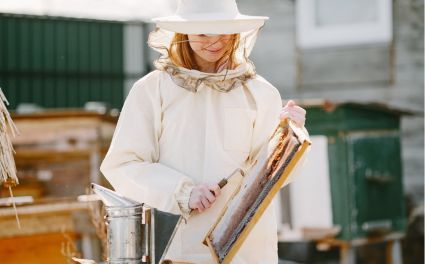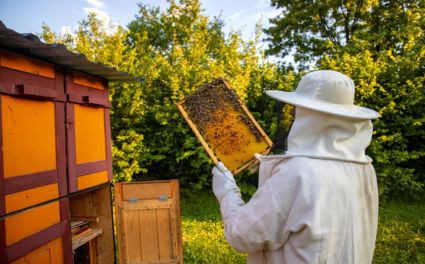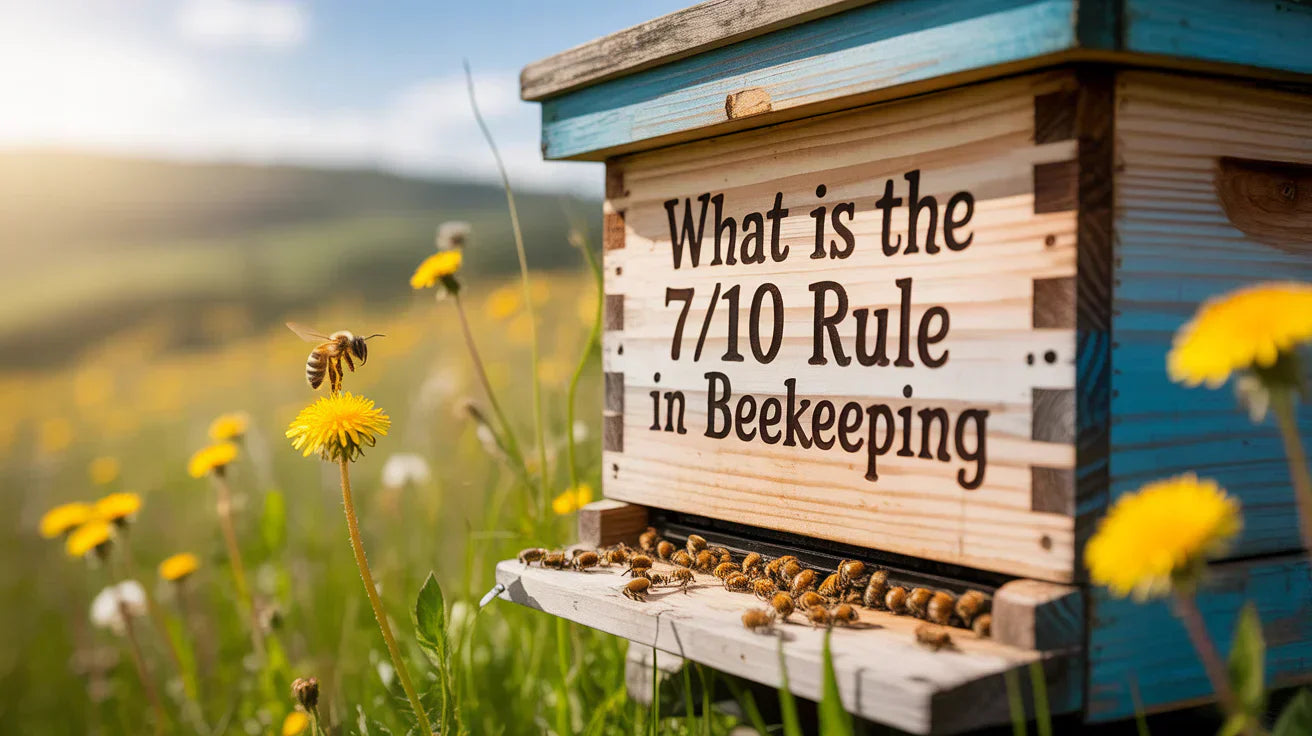Introduction: How Do You Know When to Add a New Box to Your Hive?
Beekeeping is as much an art as it is a science. Whether you’re a beginner or managing multiple hives, one question pops up every season:
“When should I add the next box to my beehive?”
That’s where the 7/10 Rule comes in. It’s a simple, practical method used by beekeepers around the world to ensure bees have the space they need — at the right time.
This rule can help prevent overcrowding, reduce swarming, and maintain a strong, productive colony. And the best part? You don’t need advanced tools or years of experience to use it — just your eyes, some time, and basic understanding of what to look for.
What Is the 7/10 Rule in Beekeeping?
The 7/10 Rule (sometimes written as the “7 out of 10 Rule”) is a timing guideline that tells you when to add another box (also called a "super") to your hive.
Here’s the rule in simple terms:
When 7 out of 10 frames in the current box are drawn out or filled with comb, brood, or honey — it’s time to add another box.
This can apply to both brood boxes and honey supers. When bees are actively building or storing resources and 70% of the current space is used, you give them more room to expand. It’s that easy.
What Does “Drawn Out” Mean?
“Drawn out” refers to bees building wax comb on the foundation of a frame. In a new hive, the frames often have flat sheets of foundation (plastic or wax) to guide comb development.
Once bees build up wax and form cells (to raise brood or store honey), that frame is considered “drawn out.”
If the comb is white and fresh, it’s new. If it’s yellow or brownish, it’s likely been used for brood before.
Why Is the 7/10 Rule So Important?
Let’s break down why this rule matters:
🐝 1. Prevents Overcrowding
If bees run out of space in their hive, they feel cramped and stressed. This overcrowding can lead to swarming, where the queen and half the colony leave in search of a new home. That means fewer bees in your hive — and less honey production.
🐝 2. Encourages Continuous Growth
By adding another box just before the hive fills up, you give bees the space they need to keep building comb, laying eggs, and storing nectar. This ensures steady colony expansion during active seasons.
🐝 3. Optimises Honey Production
A well-timed super addition means bees won’t be forced to cap nectar early or reduce foraging due to lack of space. More room = more honey.
🐝 4. Maintains Hive Health
Good ventilation and spacing also help bees regulate humidity and temperature — essential for brood health and overall colony wellness.
When Exactly Should You Add a Super?
Here’s a quick guide using the 7/10 Rule:
| 🕵️♂️ Frame Inspection Result | 🧭 Action |
|---|---|
| 5/10 frames drawn/fill | Wait — not yet. Hive still has room. |
| 6/10 frames drawn | Keep an eye — recheck in 3–5 days. |
| 7/10 frames drawn | ✅ Add another box now. |
| 8–9/10 drawn | Act immediately — risk of overcrowding. |
During spring buildup and nectar flow seasons, colonies grow fast. You might need to inspect your hives every 7–10 days.
How to Apply the 7/10 Rule: Step-by-Step
-
Open the hive on a sunny day (less aggressive bees).
-
Lift each frame gently and inspect:
-
Are there wax cells on both sides?
-
Are they filled with nectar, capped honey, or brood?
-
-
Count how many frames out of 10 meet the “drawn or filled” condition.
-
If 7 or more — add a new box on top.
🔄 Pro Tip: Rotate frames slightly when inspecting to not crush bees. Use a smoker lightly if needed.
Common Mistakes to Avoid
Even though the 7/10 Rule is simple, many new beekeepers still make timing mistakes. Here are some to avoid:
❌ Adding the super too early
If only 3 or 4 frames are being used, adding another box spreads the bees too thin. This slows down comb building and exposes the hive to temperature swings.
❌ Adding too late
If 8 or 9 frames are already drawn and capped, bees may already be feeling cramped. Swarming might begin before you catch up.
❌ Skipping inspections
Without regular checks, you may miss the moment. Don’t rely on guesswork — open the hive and look!
❌ Not adjusting for seasons
The 7/10 Rule is a good general rule, but you also need to factor in local nectar flows, temperature, and colony strength.
Tips for Making the Most of the 7/10 Rule
✅ Use foundation frames to speed up comb building
✅ Check frames from both sides – bees may draw one side and not the other
✅ Use hive markers or colour-coded frames to track changes over time
✅ Keep a hive journal – note dates of inspections and super additions
✅ Always wear proper protective clothing to inspect with confidence and care
FAQs: Quick Answers for Beekeepers
❓ What if only 6 frames are drawn, but bees are very active?
Wait a few more days and re-check. Don't rush the super addition — you want bees to commit to the current box first.
❓ Can I apply this rule to brood boxes too?
Yes! It works for both brood and honey supers. Just be sure to understand the goal of the box you're adding.
❓ What if I’m using 8-frame boxes instead of 10?
Use the 70% rule instead: when 5–6 frames are drawn in an 8-frame box, add the next box.
Final Thoughts: Let the Bees Guide You
The 7/10 Rule is a simple, proven way to keep your hive thriving. It empowers you to make decisions based on what the bees are showing you — not guesswork or rigid calendars.
Beekeeping is about observation, patience, and gentle intervention. By following this rule, you’re giving your colony the space it needs to grow, flourish, and produce the golden reward you’re working toward.
So next time you open your hive, do a quick count.
Are 7 out of 10 frames in use?
If yes — it’s time to super.



